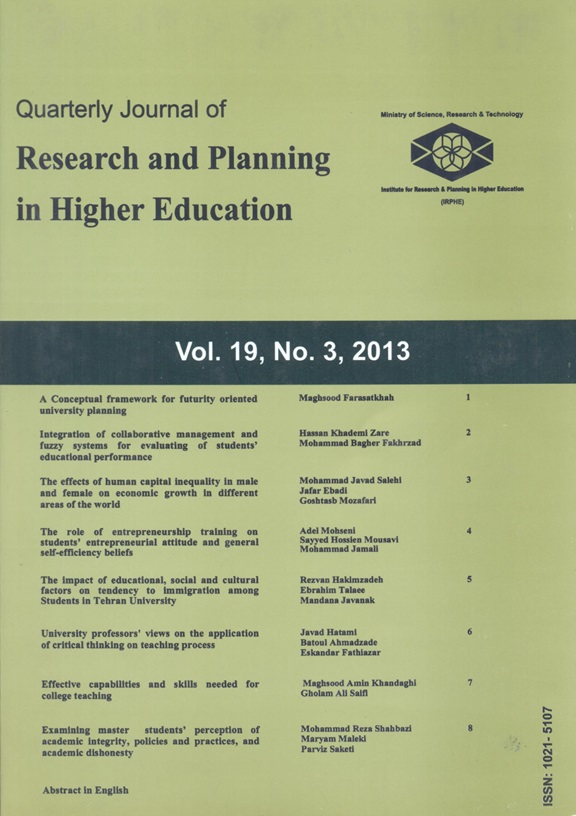The impact of educational, social and cultural factors on tendency to immigration among Students in Tehran University
Authors
1 Faculty of Psychology and Education, Tehran University
2 Faculty of Humanities, Tarbiat Modarres University
3 Master in Educational Research, Faculty of Psychology and Education, Tehran University
Abstract
Today, development of nations depends on training of efficient people and utilizing their capabilities. Notion of creative and motivated humans is a precious treasure that if it is used wisely, will make sustainable development. Iran is among the courtiers which its specialist’s immigration is at the highest level. The present study was conducted by the aim of examining educational, social and cultural factors affecting students’ immigration in University of Tehran. The research was a descriptive applied survey. Statistical population consisted of all students studying in the Engineering Faculty of University of Tehran. Sample of the study was 415 individuals, chosen by simple random method and a questionnaire was used as an instrument to collect data. Educational satisfaction was assessed by Neill (2010) questionnaire social-academic integration was assessed by Pascarella and Terenzini’s (1980) questionnaire and for social-cultural alienation three subscales of Melvin Seeman’s (1983) alienation scale was employed. Validity of the instrument was approved by the supervisors and adviser of the study. Reliability of instrument was confirmed by calculating Cranach’s alpha coefficient for educational satisfaction, social-academic integration and inclination to immigration as 0.90, 0.71, 0.77, 0.85, and 0.86 respectively. Data was analyzed using descriptive and inferential statistical methods. The relationship between predictor and criterion variables was determined by using Pearson correlation coefficient and stepwise multiple regression. The results showed that variables of social-cultural alienation and age had significant positive correlation, and educational satisfaction had significant negative correlation with tendency to immigration variable. There was no significant relation between social-academic integration and tendency to immigration. Men had significantly more tendency than women, and undergraduate students compare to graduate students had less tendency to immigration. There was no significantly difference among socio-economic classes and tendency of students toward immigration.
Keywords
 Quarterly Journal of Research and Planning in Higher Education
Quarterly Journal of Research and Planning in Higher Education
